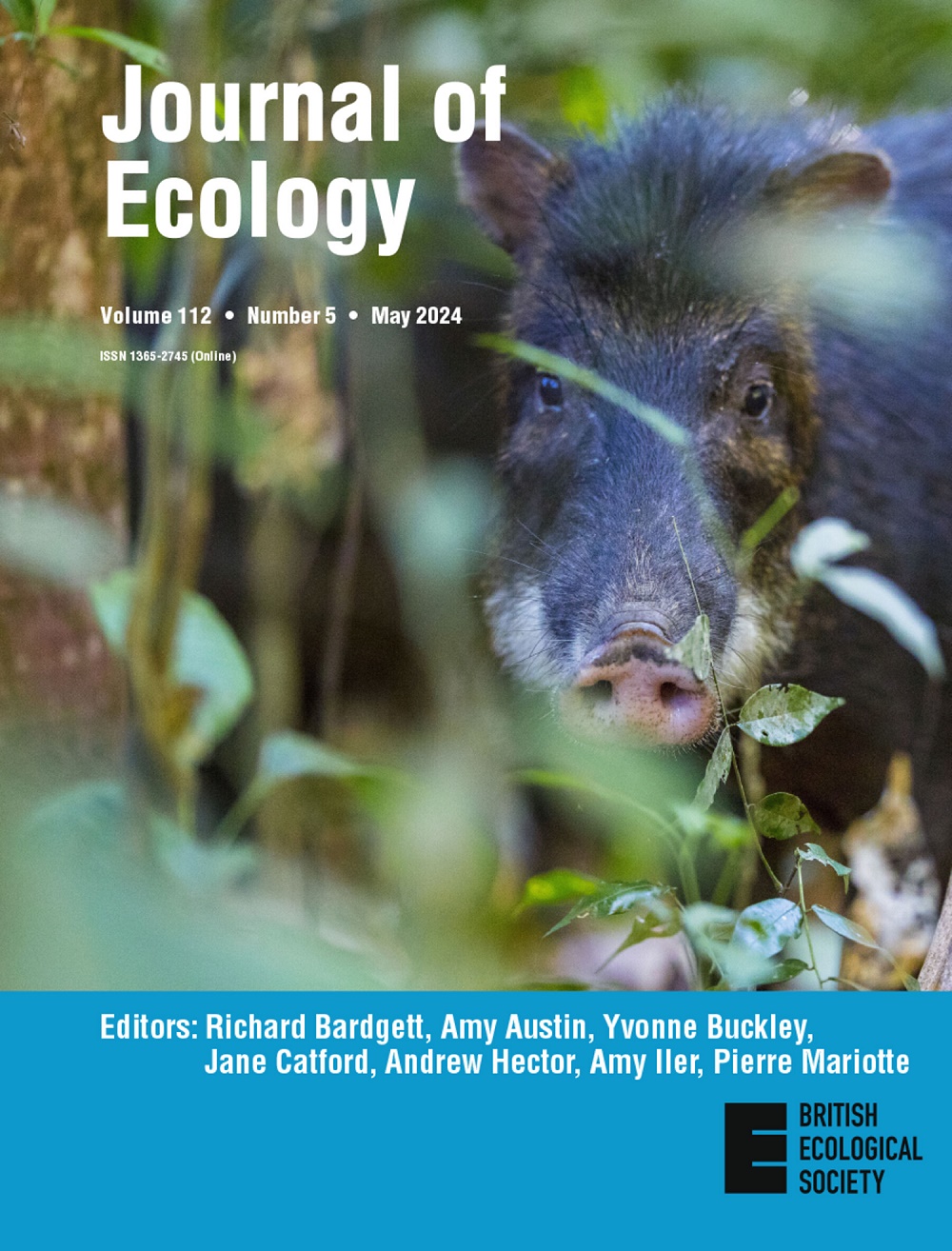Large-scale atmospheric variability entails differential modes of seasonal tree growth in the Mediterranean Basin
IF 5.6
1区 环境科学与生态学
Q1 ECOLOGY
引用次数: 0
Abstract




大尺度大气变率导致地中海盆地树木季节性生长的不同模式
大气环流的天气尺度变化控制着影响广泛地理范围内木材形成的气候。年际树木生长在不同季节表现出不同的气候响应,其对遥相关的依赖可能最终导致在大空间范围内形成不同的生长模式。远距连接对地中海树种季节性生长的影响了解甚少;然而,它对全球碳循环至关重要。我们收集了335棵黑松树的木材样本,黑松树是一种环地中海物种,覆盖了地中海盆地2000公里宽的梯度。我们的统计框架包括四个遥相关,分别用于解决每个季节:(1)遥相关-气候联系的空间差异;(2)晚木和早木生长对降水和温度的交互效应的响应;(3)遥相关与晚木和早木之间的直接联系。我们报告说,在所有分析的地点和季节中,东大西洋模式和温度之间存在强烈、均匀和积极的联系。然而,遥相关对降水的影响以负相关为主,除1个季节外,其余季节均存在空间异质性。冬季和春季温度对早木和春季晚木的生长均有正向影响,而降水对年际生长的影响均受温度的调节。远距联系对晚木比早木的控制更强烈,并证实了与降水相关的气候模式在年际增长的大小和标志上表现出最大的差异,如西地中海涛动。合成。在这项工作中,我们通过地中海盆地的当地气候证明了远程连接对季节性树木生长的控制。尽管东大西洋模式和温度之间存在持续的联系,但遥相关之间的协同作用表明,在降水变率的驱动下,树木的季节性生长存在东西偶极子。伊比利亚半岛和南北巴尔干半岛与整个地中海盆地表现出显著的差异,特别是在夏季和与晚木形成相吻合的时候。这突出了远距离连接如何在大地理尺度上促进不同的树木生长模式,这对碳循环特别重要,因为后期木材中储存了大量的碳。
本文章由计算机程序翻译,如有差异,请以英文原文为准。
求助全文
约1分钟内获得全文
求助全文
来源期刊

Journal of Ecology
环境科学-生态学
CiteScore
10.90
自引率
5.50%
发文量
207
审稿时长
3.0 months
期刊介绍:
Journal of Ecology publishes original research papers on all aspects of the ecology of plants (including algae), in both aquatic and terrestrial ecosystems. We do not publish papers concerned solely with cultivated plants and agricultural ecosystems. Studies of plant communities, populations or individual species are accepted, as well as studies of the interactions between plants and animals, fungi or bacteria, providing they focus on the ecology of the plants.
We aim to bring important work using any ecological approach (including molecular techniques) to a wide international audience and therefore only publish papers with strong and ecological messages that advance our understanding of ecological principles.
 求助内容:
求助内容: 应助结果提醒方式:
应助结果提醒方式:


